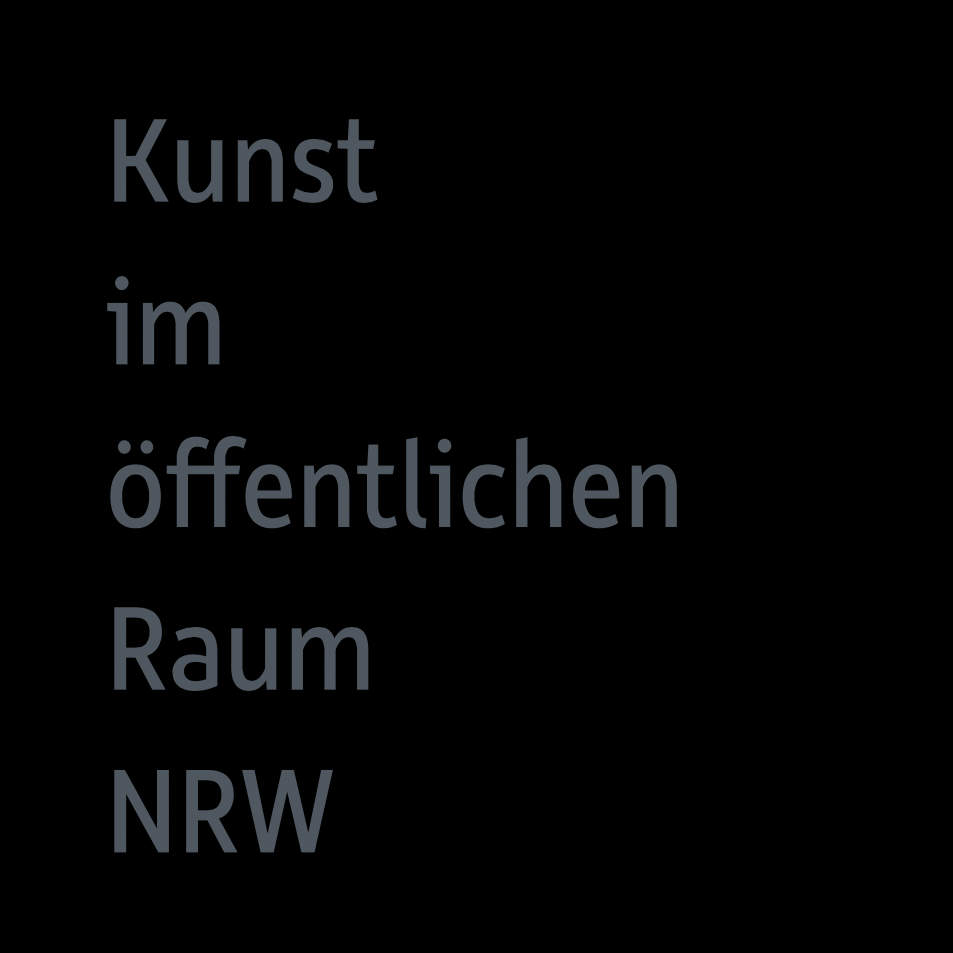Brunnen / Fountain
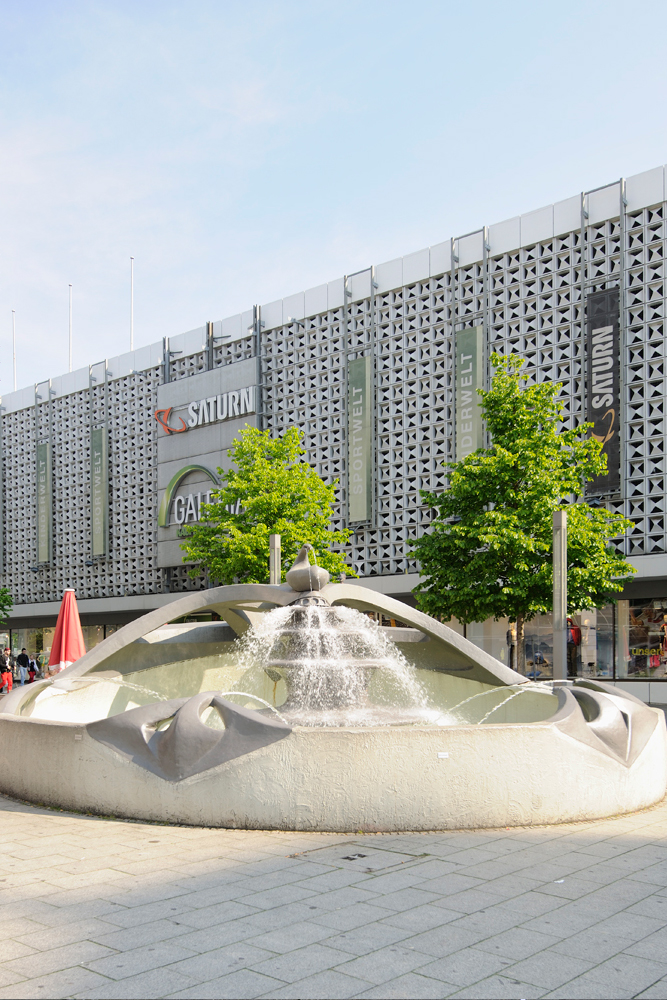

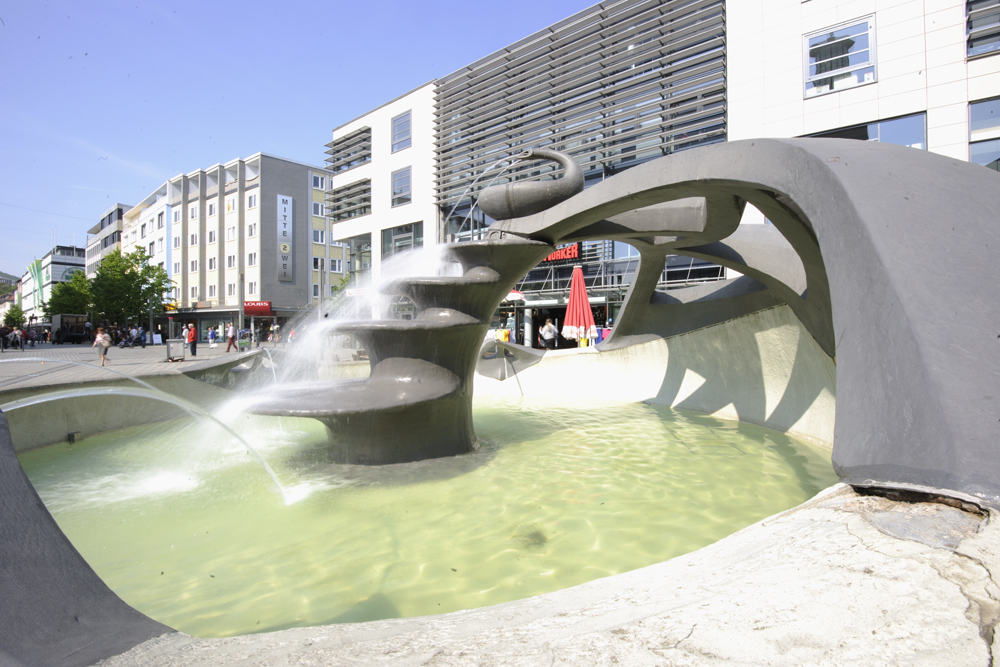
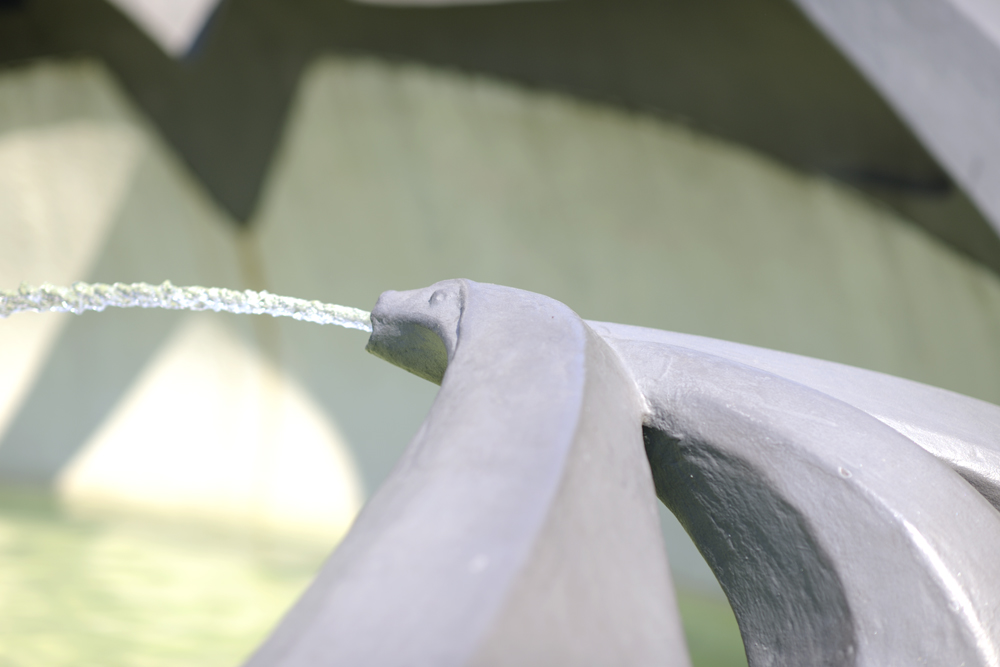
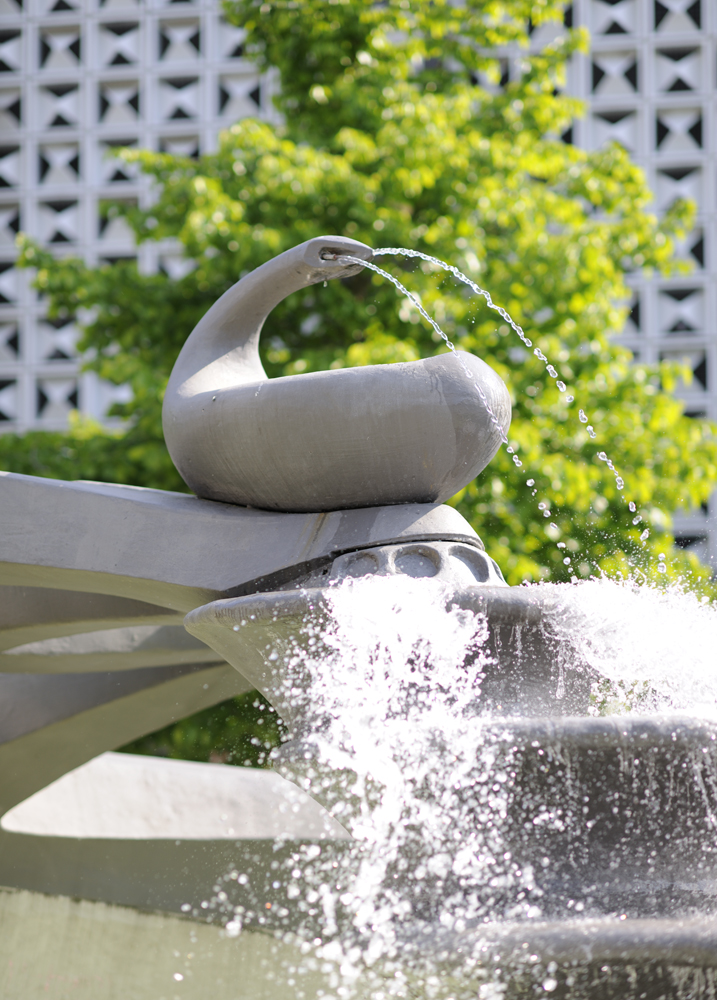
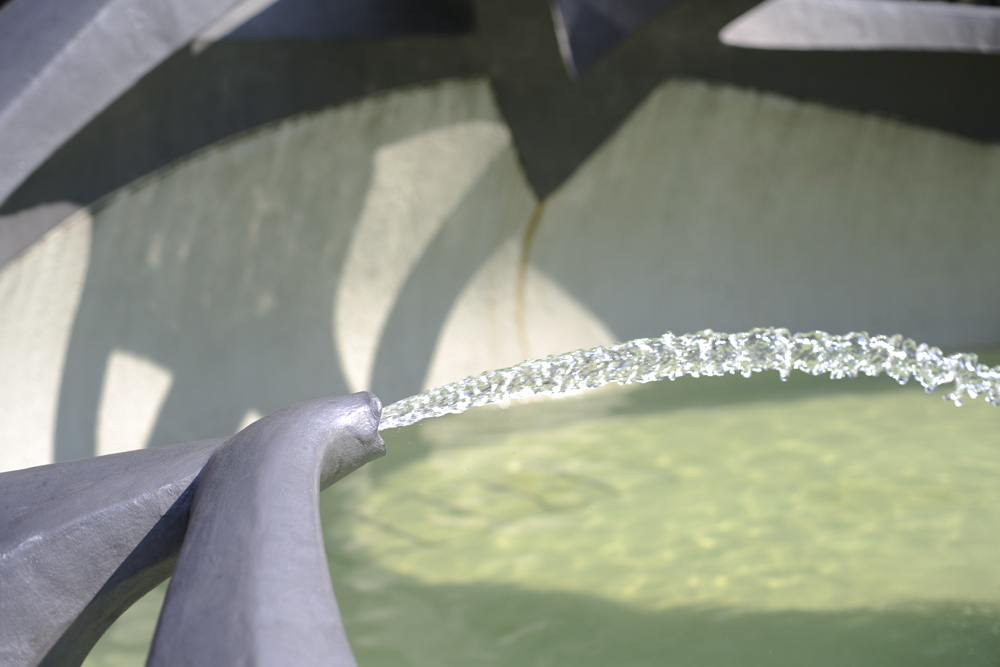
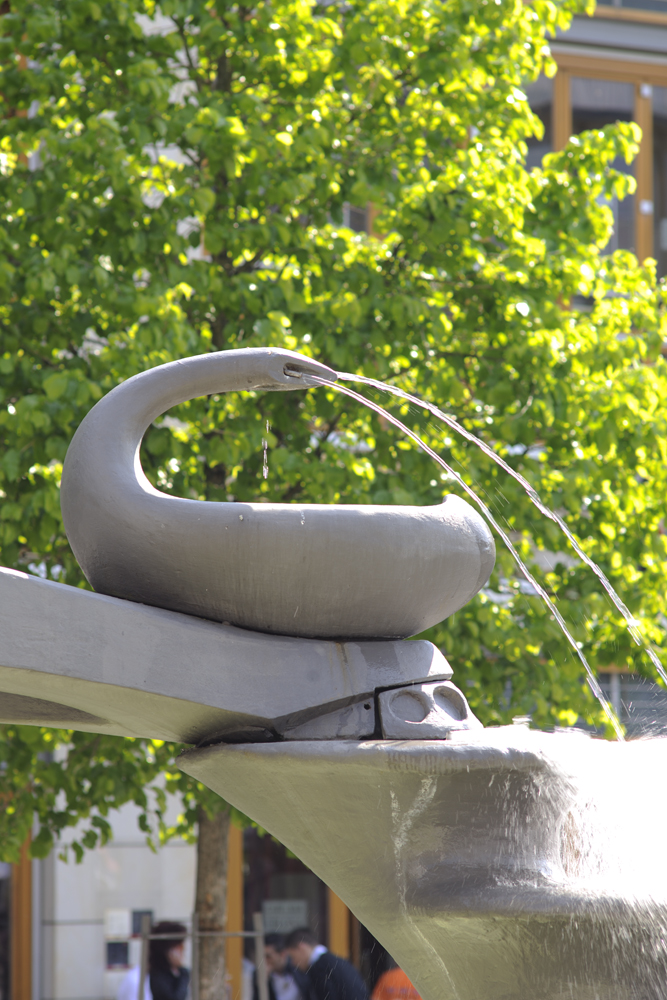
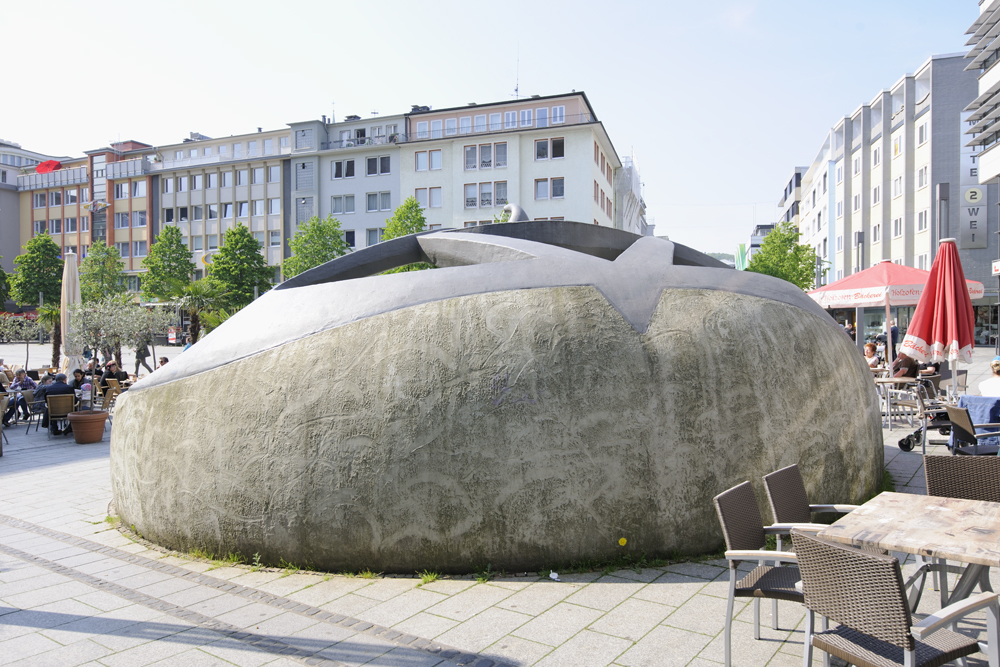
Ewald Mataré did not live to see the realization of his last great work. Instead, his student Herbert Belau completed it using a clay model that the artist left behind. The fountain’s design is based on the topography of the city of Hagen: the four water spouts mounted on the outside of the circular basin represent the four rivers – Volme, Ennepe, Lenne, and Ruhr. A cascading element rises out of the middle of the basin and symbolizes the water supply from the Haspe dam.
The fountain’s design appears organic and futuristic at the same time. It is dominated by curved arches that simultaneously manipulate and follow the flow of water; in turn, the artistic form and the natural element function as a balanced unit. The cast iron waterspouts and the cascade are based on abstract forms of fish and coral.
Best known for his animal sculptures, Mataré’s work always featured condensed and abstracted representations of nature. For him, it was a return to the origins – to the harmony between artistic creation and natural environment.
Further reading:
Public Art Ruhr. Die Metropole Ruhr und die Kunst im öffentlichen Raum. Eds. Walter Smerling and Ferdinand Ulrich on behalf of the RuhrKunstMuseen, Cologne 2012, ISBN 978-3-8632-134-0, pp. 112–113.
Ewald Mataré
← Zur Startseite
Hagen, Friedrich-Ebert-Platz
